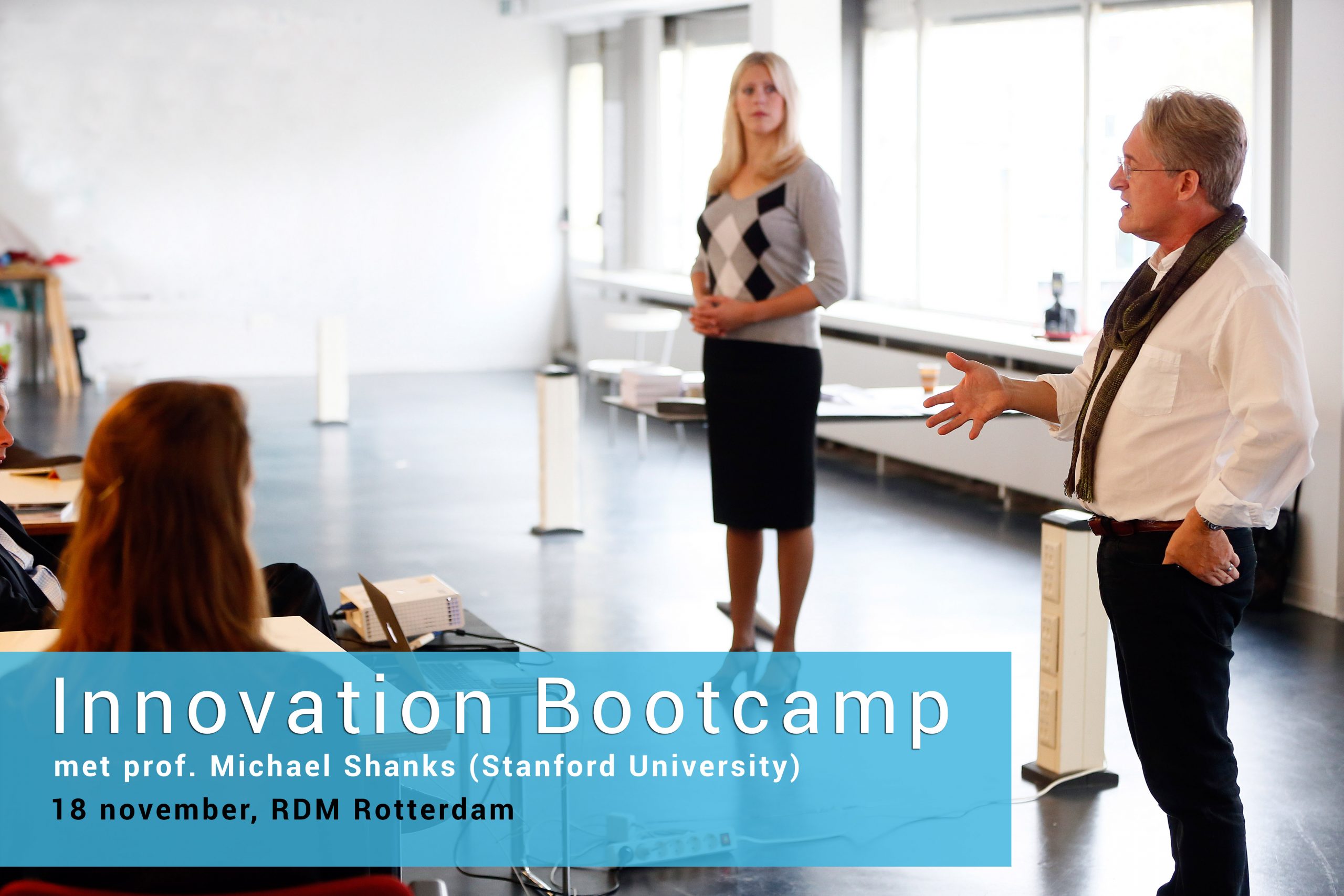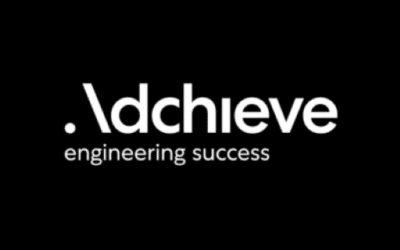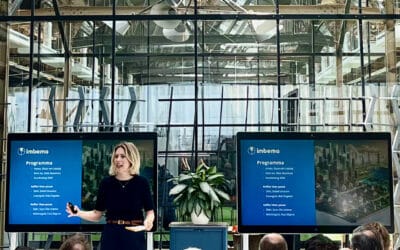Op woensdag 18 november 2015 geeft Janne Vereijken samen met professor Michael Shanks, verbonden aan de d.school van Stanford University, een Innovation Bootcamp.
In deze bootcamp maakt u op praktische manier kennis met ‘design thinking’. Dit is een innovatietechniek ontwikkeld door het innovatiebedrijf IDEO uit Californië en wordt als volgt omschreven:
“Design thinking is a way of looking at the world, of thinking, planning, and delivering innovative solutions to messy problems and challenges. Design thinking helps a business or organization connect better with the people it serves. It matches people’s needs with what is technologically feasible and viable as business strategy or institutional policy. Design thinking is a way of being agile and flexible, putting people first in a world of change.”
In Silicon Valley past 30% van de start-ups design thinking toe. Courses in design thinking van Michael Shanks op de d.school van Stanford University zijn razend populair in het Amerikaanse bedrijfsleven en onder studenten.
In deze bootcamp doorloopt u in één dag alle stappen van innovatieproces. U past aangereikte design thinking technieken direct toe op een case. U werkt in groepen met andere deelnemers en hebt de mogelijkheid om een case van uw organisatie in te brengen. De case kan betrekking hebben op een te ontwikkelen product, dienst of oplossing voor jouw klanten. Ter afsluiting van de bootcamp wordt besproken hoe opgedane ervaring verder toegepast kan worden in de eigen organisatie.
Key words: high energy, high creativity & fun. De voertaal is Engels.
De Innovation Bootcamp vindt plaats op RDM Rotterdam. Dit is dé innovatie-etalage van het Rotterdamse havengebied en biedt plaats aan bedrijven, onderijs en onderzoek. Samen werken zij hier aan het vormgeven van de nieuwe maakindustrie voor haven en stad. De bootcamp start met een rondleiding in het Innovation Dock. In deze monumentale industriële hal werken bedrijven, studenten en onderzoekers naast en met elkaar aan open innovatie in de markten maritiem & offshore, energie & procesindustrie, duurzaam bouwen en logistiek & mobiliteit rond thema’s als composieten, robotica en 3D-printen. Binnenkort opent hier ook de eerste dronepilotenschool van Nederland.
Deze rollercoaster bootcamp is een echte aanrader als u praktische ervaring op wilt doen met de innovatie mindset en skills uit Silicon Valley!
About Michael Shanks
Stanford University, regularly acknowledged as one of the top three universities in the world, is the heart of Silicon Valley’s innovation culture. The design division of the university’s Engineering School has been a key component in the development and continuing growth and success of Silicon Valley. For three decades and more in collaboration with start-ups as well as Fortune 500 companies this experience has been distilled into a set of principles and practices, often called “design thinking”, that lie behind the innovation and success not just of the IT industry but of many projects in community building and
services, local and national politics.
Michael Shanks is senior faculty affiliated with the design group at Stanford University – the Hasso Plattner Institute of Design at Stanford, Stanford’s famous d.school, the Center for Design Research, as well as Stanford’s Center for Professional Development, the university’s agency devoted to sharing innovation culture and design thinking with the business community. An accomplished award winning communicator, he teaches the biggest design class voted by Stanford students one of the top ten “must do classes” in the university. A humanist, historian and archaeologist, Michael takes a broad brush view of human centered innovation in finding practical solutions to challenges facing businesses and organizations. As a member of Stanford Strategy Studio, Stanford Foresight and Innovation, and Innovation Leadership Board, he has worked with many companies and agencies across the world.
Michael has been a member of Rotterdam’s International Advisory Board since 2008 and knows well the needs of its businesses and communities.
Design thinking
Design thinking has emerged as the way to make a difference. Not just in products and services, but in addressing questions of how to solve the world’s problems and how to run your organization better as well – to figure out how to deal with complexity and ambiguity and to create new value, wellbeing for as many as possible. Business schools across the US run programs in design thinking. Major Fortune 500 companies like Intel and Proctor and Gamble and now Google have embraced design thinking. More than a third of startups in Silicon Valley adopt a design-based approach.
Here is how it is expressed by the authors of “Solving Problems with Design Thinking” (Darden School of Business, University of Virginia; Columbia Business School Publishing):
“What do you get when managers join forces with designers? You get a group of business strategists who come up with a metaphor that makes a new strategy feel real and meaningful for the people who must implement it. And a city that finds opportunities for revitalization by drawing on its citizens’ creative energy. And a meal delivery service for the elderly that transforms itself by considering the needs not just of clients but of the employees preparing the food. In short, you get a different kind of conversation among those who matter, a process that can yield unexpected solutions to thorny problems.”
Design has become too important to be left to designers. But just what is “design thinking”? The best way to find out is to do it.
Bootcamp
So Spring Company offers a one-day “bootcamp” — a crash-course in design thinking. Rather than read the latest commentary in Harvard Business Review, Spring Company offers a hand-on exercise and experience, enabling participants to pursue a design challenge that will reveal just what all the fuss is about. The bootcamp will bring the expertise of Stanford University’s design school, the d.school, the renowned home of design thinking in Silicon Valley.
“I wouldn’t have had the idea to approach the problem in this way if I hadn’t been to the d.school. You realize that you aren’t going to solve the problem sitting in an office, you need to get out and talk to the people who are actually dealing with it, whether that’s your customers or your front-line employees.” – Bonny Simi, Jet Blue.
“We are on the cusp of a design revolution in business. Competing is no longer about creating dominance in scale-intensive industries, it’s about producing elegant, refined products and services in imagination-intensive industries. As a result, business people don’t just need to understand designers better — they need to become designers” – Roger Martin, Rotman School of Management, Toronto.
And there’s even more at stake — fundamental questions of common human concern.
How can we creatively encounter and manage fundamental and disruptive change? Within the next two decades new technological and social developments will fundamentally change public systems and private business models. We need agile and adaptive attitudes and ways of responding and turning change to best ends.
When faced with disruptive change, existing models for ways of thinking and acting are inadequate. To paraphrase Einstein—“no wicked problem can be solved from the same level of consciousness that created it”.
We have to go back to the drawing board. This is why design thinking is getting more and more important. Design thinking is a tried and tested way of creatively and collaboratively intervening in the world, researching, finding, manufacturing, and managing flexible and adaptable solutions, from products to complex systems.
Join us to find out how to do just this!
Via onderstaande links vind je meer informatie over design thinking:







